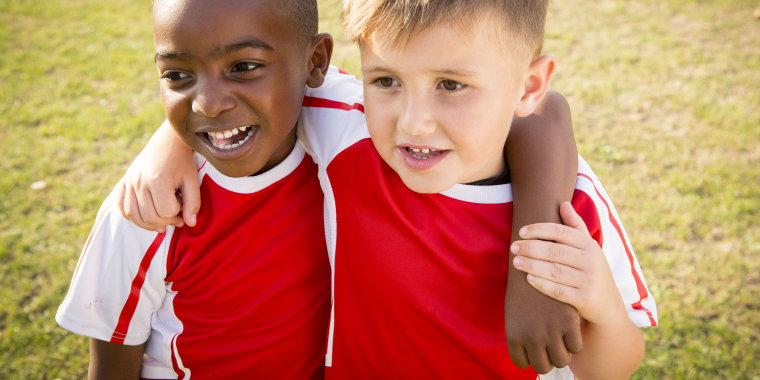The ability to respect others is a skill that will benefit your child throughout his or her lifetime. It is important to teach your child about the value of diversity, and show them that differences in beliefs, cultures, and religions can enrich our lives and bring new ideas to our world.
Expose your child to people who are different. Maurice Elias, director of Rutgers Social-Emotional Learning Lab, says that the more exposure that your child has to people who are different without any negative incidents, they will be more accepting of others. Elias adds that children of this age vary considerably in the extent to which they react to differences. Some children may be especially sensitive to children with medical or other disabilities, particularly if there is equipment involved. Others are uncomfortable by differences in loudness or activity level, while some may be curious about differences in skin color. However, there is no formula for what it takes for any given child to feel comfortable, so you will need to be patient. Keep in mind that your child may be listening to your adult conversations, and if you make derogatory statements about people who are different, your child will learn from you. Educational consultant Jennifer Miller suggests that you heighten your own awareness of how you discuss others, become intentional about what you are communicating, and be consistent with your messages.
Ask your child to find similarities between them and their classmates. You may also want to talk to your child about the many ways that people are similar by asking them to get to know a new classmate or teammate and find out if they like the same food, books, games, or TV shows. New York City-based teacher Anne Harlam adds that children in her classrooms are already doing this on their own, as this is the age when they are beginning to identify with one another in terms of commonalities. For example, when children in her class open their lunchboxes, they get excited when someone else in class brings the same yogurt as they do, and it doesn’t matter who, or how “different,” that other person is. Discovering similarities can help your child learn more about others and make them realize that everyone deserves to be treated with respect and kindness. It can also help them to be more open-minded, respectful, and accepting of others.
Author and education consultant Faye de Muyshondt recommends teaching your child about greetings around the world. In the United States, people say hello. In other cultures, like India, people bow and put hands together and say “namaste.” They also touch the feet of elders to show respect. In France, people kiss three times on the cheek. Showing your child the way people from different countries greet one another is a fun way to teach about cultural differences and traditions. You may also want to read books like "What a Wonderful World" by George David Weiss, "Yoko" by Rosemary Wells, or "How to Make an Apple Pie and See the World" by Marjorie Priceman, which show examples of different people and traditions of the world. After reading these books, you can prepare a cultural dish together, and use this opportunity to talk about your family’s history as well.
Parent Toolkit resources were developed by NBC News Learn with the help of subject-matter experts, including Maurice Elias, Director, Rutgers Social-Emotional and Character Development Lab; Faye de Muyshondt, socialsklz:-) for SUCCESS; and Anne Morrison, Pre-Kindergarten Teacher, Lycée Français de New York.
